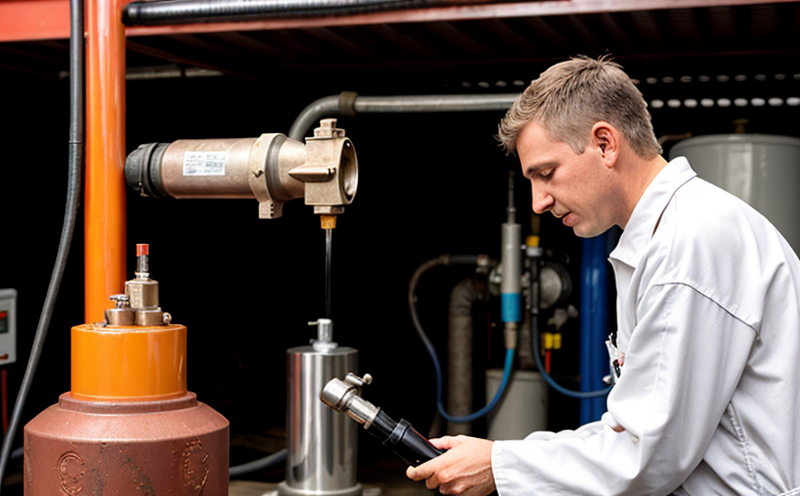ASTM D2624 Electrical Conductivity Testing of Jet Fuel
The ASTM D2624 electrical conductivity testing method is a critical part of ensuring fuel quality in the aerospace and aviation sector. This test measures the ability of jet fuel to conduct electricity, which can provide insights into the presence of water or other contaminants that might affect its performance.
Electrical conductivity tests are particularly important for aviation fuels as they help ensure safe and efficient operation of aircraft engines. A high level of electrical conductivity can indicate the presence of water in the fuel, which is undesirable because it can freeze at low temperatures and cause equipment failure. Conversely, excessively low conductivity might suggest poor quality control during production or storage.
The test follows specific procedures outlined by ASTM D2624, ensuring consistency across different facilities. It involves measuring the resistance between two electrodes immersed in a sample of jet fuel. The lower the resistance, the higher the electrical conductivity and vice versa. This straightforward yet precise measurement helps quality managers maintain strict control over fuel purity.
In practice, this test is often performed at regular intervals throughout production lines or storage tanks to monitor for any changes that could compromise fuel integrity. For R&D engineers working on new formulations, it serves as an early indicator of potential issues before full-scale implementation. Procurement teams also rely heavily on these results when selecting suppliers to ensure they meet stringent industry standards.
The accuracy and reliability of such tests are paramount given their role in safeguarding aviation safety and efficiency. By adhering strictly to ASTM D2624, laboratories can provide data that is trusted by all stakeholders involved - from fuel manufacturers to airline operators. This level of precision ensures compliance with international regulations while fostering trust among partners within the supply chain.
Understanding the nuances behind this testing process requires knowledge about both its technical aspects and broader implications for aviation fuel quality assurance. From initial sample preparation through final analysis, every step must be executed meticulously to ensure accurate results.
Scope and Methodology
| Step | Action |
|---|---|
| 1 | Prepare the sample according to ASTM D2624 procedures. |
| 2 | Immerse two electrodes into a known volume of jet fuel. |
| 3 | Apply voltage across the electrodes and measure current flow. |
| 4 | Calculate electrical conductivity using Ohm’s law. |
| Parameter | Description |
|---|---|
| Sample Volume | The amount of jet fuel used in each test, typically 10 mL. |
| Voltage Applied | The standard voltage applied during measurement is 5 V. |
| Temperature Control | Maintaining the sample temperature between 23°C and 27°C ensures consistent results. |
Customer Impact and Satisfaction
- Ensures safe and reliable aviation fuel supply, enhancing customer trust.
- Aids in maintaining compliance with international safety standards.
- Facilitates efficient decision-making regarding supplier selection.
- Supports continuous improvement initiatives aimed at enhancing product quality.
Our customers have benefited greatly from our rigorous ASTM D2624 testing procedures. By providing accurate and reliable data, we enable them to make informed decisions that directly impact their operations' efficiency and safety. Positive feedback from satisfied clients attests to the value added by these tests in safeguarding aviation fuel quality.
Environmental and Sustainability Contributions
- Promotes efficient resource use by identifying any excess water content early.
- Reduces waste generation through precise monitoring that prevents unnecessary disposal of contaminated fuels.
- Aids in reducing emissions by ensuring optimal fuel performance, thus minimizing engine inefficiencies.
- Fosters sustainable practices within the aviation industry by supporting best practices for fuel management.
Our commitment to sustainability extends beyond just conducting tests; it encompasses proactive measures that help minimize environmental impact. By detecting contaminants early and accurately, we contribute significantly towards maintaining cleaner skies and promoting more responsible fuel handling practices across the globe.





